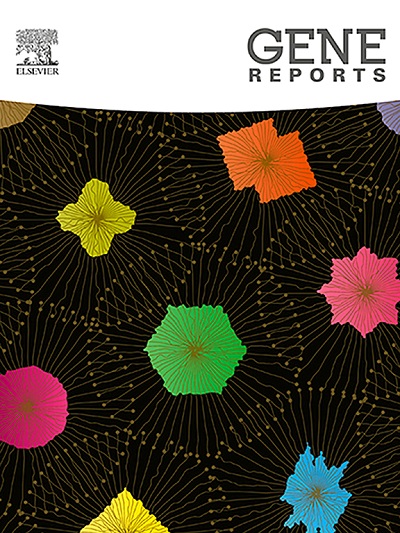Systematic exploration of genetic traits in Qinghai Salar ethnic group through a validated InDel panel for individual identification
IF 1
Q4 GENETICS & HEREDITY
引用次数: 0
Abstract
Background
Insertion/deletion (InDel) polymorphism markers, mainly characterized by diallelic length polymorphisms, have been extensively investigated in forensic applications. The Salar ethnic group is one of the ten officially recognized Muslim minorities in China, with a large population mainly residing in Qinghai Province, China, yet there have been few population genetic studies on the Salar ethnic group, let alone those using InDel markers.
Aim
The present study aims to explore the genetic traits and enrich the genetic resources of the Qinghai Salar ethnic group through a validated InDel panel developed in-house.
Subjects and methods
Forensic performance of the novel self-constructed 43-InDel panel, designed for individual identification, was evaluated in the Qinghai Salar ethnic group from China. In addition, based on these 43 InDels, the genetic characteristics of the Qinghai Salar ethnic group were systematically explored by incorporating 27 reference populations from five continents.
Results
The results indicated that most loci in the 43-InDel panel were genetically polymorphic in the Qinghai Salar ethnic group, and the novel panel could serve as an efficient tool for individual identification of the studied group, with a combined discrimination power of more than 0.9999. Population genetics analyses demonstrated that the Qinghai Salar ethnic group was genetically closer to East Asian populations than to other continental populations, especially the Hui ethnic group in Northwest China and Han Chinese in Beijing.
Conclusion
In summary, the in-house developed 43-InDel panel could be an effective tool for individual identification and provide additional genetic information for the Qinghai Salar ethnic group.
求助全文
约1分钟内获得全文
求助全文
来源期刊

Gene Reports
Biochemistry, Genetics and Molecular Biology-Genetics
CiteScore
3.30
自引率
7.70%
发文量
246
审稿时长
49 days
期刊介绍:
Gene Reports publishes papers that focus on the regulation, expression, function and evolution of genes in all biological contexts, including all prokaryotic and eukaryotic organisms, as well as viruses. Gene Reports strives to be a very diverse journal and topics in all fields will be considered for publication. Although not limited to the following, some general topics include: DNA Organization, Replication & Evolution -Focus on genomic DNA (chromosomal organization, comparative genomics, DNA replication, DNA repair, mobile DNA, mitochondrial DNA, chloroplast DNA). Expression & Function - Focus on functional RNAs (microRNAs, tRNAs, rRNAs, mRNA splicing, alternative polyadenylation) Regulation - Focus on processes that mediate gene-read out (epigenetics, chromatin, histone code, transcription, translation, protein degradation). Cell Signaling - Focus on mechanisms that control information flow into the nucleus to control gene expression (kinase and phosphatase pathways controlled by extra-cellular ligands, Wnt, Notch, TGFbeta/BMPs, FGFs, IGFs etc.) Profiling of gene expression and genetic variation - Focus on high throughput approaches (e.g., DeepSeq, ChIP-Seq, Affymetrix microarrays, proteomics) that define gene regulatory circuitry, molecular pathways and protein/protein networks. Genetics - Focus on development in model organisms (e.g., mouse, frog, fruit fly, worm), human genetic variation, population genetics, as well as agricultural and veterinary genetics. Molecular Pathology & Regenerative Medicine - Focus on the deregulation of molecular processes in human diseases and mechanisms supporting regeneration of tissues through pluripotent or multipotent stem cells.
 求助内容:
求助内容: 应助结果提醒方式:
应助结果提醒方式:


